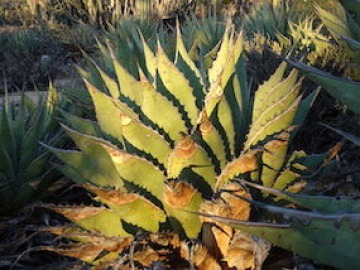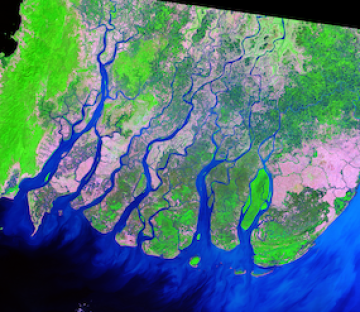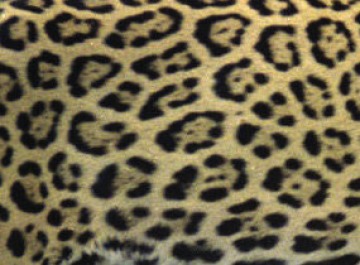“To develop a complete mind, study the science of art. Study the art of science. Develop your senses—especially to see. Realize that everything connects to everything else.” –Leonardo da Vinci
In this series of workshops you will learn to see, interpret, and recreate the patterns around us. Math is the universal language. Our translators will be agaves, trees, rivers, and jaguars, aided by guest scientists and artists. Each session takes a different approach to understanding the functioning of nature, collectively allowing us to see in new ways.
Four online Saturday workshops, each 2 hours long, comprising a science talk, session of exploring the subject through art (emphasizing field notebooks and sketching—all skill levels welcome), and time for live Q&A.
Access the series of workshops
These workshops are now past, but you can access our recordings for a reduced fee!
Cost: $25 each or $95 for all four*
Purchase the recordings of the series

Fibonacci and Agaves
Saturday, January 30
Instructors: Paul Mirocha and Roseann Hanson, artists
This workshop will begin with an exploration of the Fibonacci number sequence and how it expresses itself in everything from our own DNA to the farthest galaxies—and especially in plants and their growth patterns. Artist Roseann Hanson will introduce the Golden Rectangle, explain how it relates to the Fibonacci sequence and spiral, and show how it can be applied to artistic layouts to enhance your artwork in your field sketchbooks. In keeping with the spring lecture series “Agave Renaissance,” artist Paul Mirocha will then lead a session in drawing agaves, which strongly express the Fibonacci sequence. If we have time we'll also delve into other plants that express this sequence. You will gain new insights into mathematics and art, and expand your artistic skills.
Length: 2 hours
Time: 10 am to noon (Arizona/Phoenix time)

Fractals and Forests
Saturday, February 13
Instructors: Brian Enquist, professor of EEB, University of Arizona, and Paul Mirocha, artist
University of Arizona research ecologist Brian Enquist will share how measuring one tree using fractal mathematical formulas can be used to calculate carbon impact of a whole forest, because in fact they are not random—forests are mathematically structured. Then, Tumamoc Artist in Residence Paul Mirocha will lead a session drawing trees using Mandelbrot formulas and other fractal imaging. You will never think of a tree the same way again after this fascinating workshop.
Length: 2 hours
Time: 10 am to noon (Arizona/Phoenix time)

Fluid Dynamics and River Meanders
Saturday, March 20, 2021
Instructors: Anthony Luketich, hydrologist and river restoration specialist, and Roseann Hanson, artist
Picture a classic aerial view of a river, and you will see in your mind a series of loops and bends . . . these are called meanders. As water flows and curves, material such as sand and gravel build on the inside of the bend. The outside of the loop is left clean and unprotected, where erosion accelerates, further increasing the meandering in a powerful positive feedback loop. The result is a beautiful natural pattern that can be predicted mathematically in many forms: rivers, snake locomotion, the growth of brain coral. Hydrologist and wetland restoration specialist Anthony Luketich of the Watershed Management Group will talk about these processes, and then artist Roseann Hanson will lead a session on field sketching the Tucson stretch of the Santa Cruz River, which is in the process of being reborn after a century of stasis.
Length: 2 hours
Time: 10 am to noon (Arizona/Phoenix time)

Tessellations and Jaguar Spots
Saturday, April 10, 2021
Instructors: Kathy Stoehr, mathematics professor, and Janet Liston, mathematics professor and artist
Over sixty years ago mathematician and Enigma code-breaker Alan Turing came up with a theory for how patterns in nature such as leopard spots, zebra stripes, and honeycombs can be explained by mathematics—a theory that was proven in 2014. Mathematics professors Kathy Stoehr and Janet Liston will lead this fun workshop about the mathematics of pattern-forming and introduce us to tessellations. They will delve into the math of these patterns, as seen on jaguars, in honeycombs, and some plants—and we'll have hands-on break-out sessions to practice making tessellation patterns. You will come away with a new understanding of the wonders of pattern-development in nature.
Length: 2 hours
Time: 10 am to noon (Arizona/Phoenix time)

